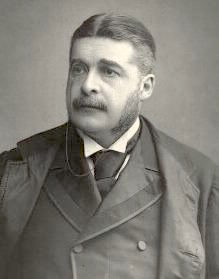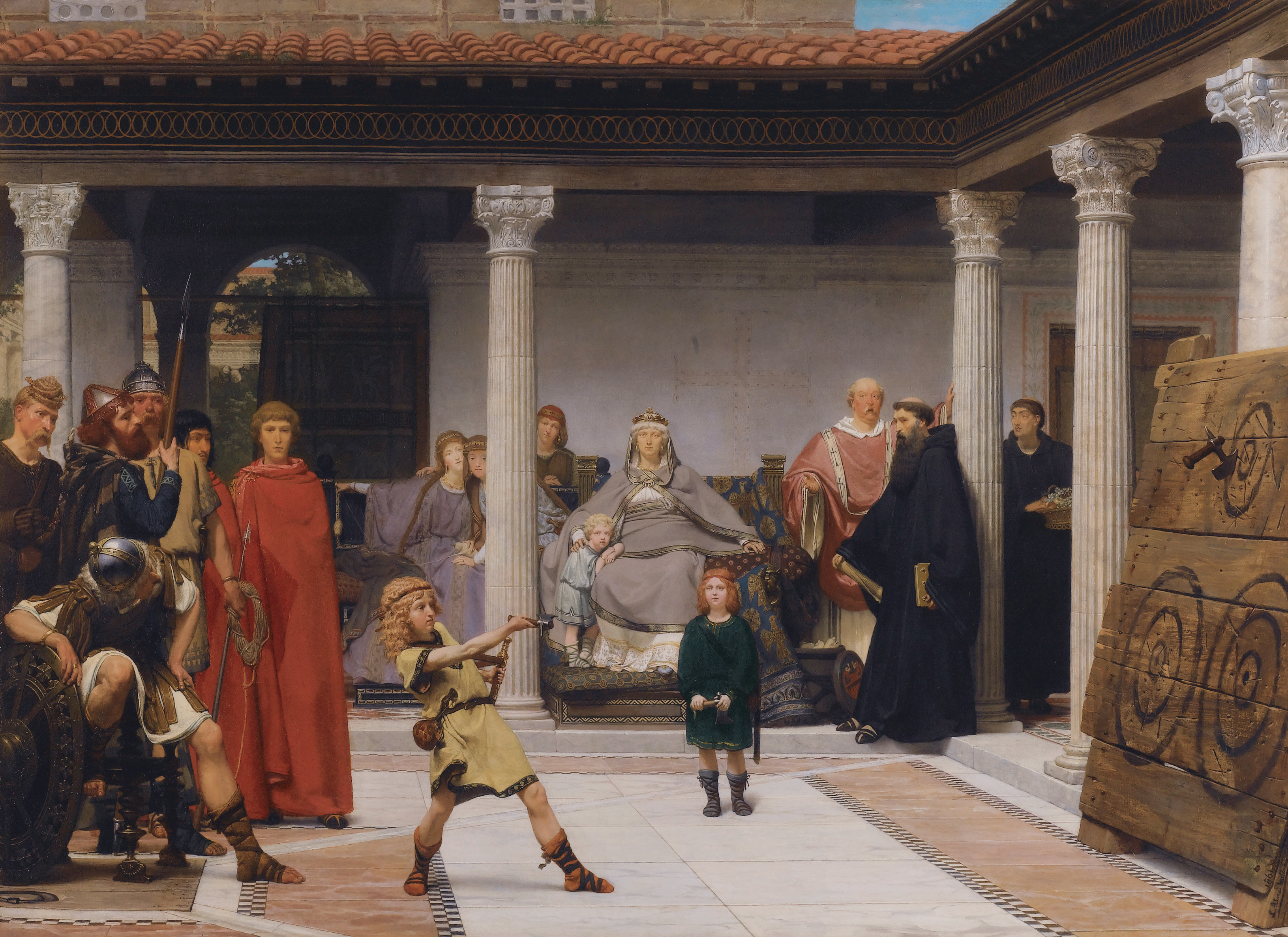|
William Russell Flint
Sir William Russell Flint (4 April 1880 – 30 December 1969) was a Scottish artist and illustrator who was known especially for his watercolours of women. He also worked in oils, tempera, and printmaking. Biography Flint was born in Edinburgh on 4 April 1880 and was educated at Daniel Stewart's College and then Edinburgh Institution. From 1894 to 1900 Flint was apprenticed as a lithographic draughtsman while taking classes at the Royal Institute of Art, Edinburgh.Theo Cowdell"Flint, Sir William Russell"''Oxford Art Online'' From 1900 to 1902 he worked as a medical illustrator in London while studying part-time at the Heatherley School of Fine Art. He furthered his art education by studying independently at the British Museum. He was an artist for ''The Illustrated London News'' from 1903 to 1909, and produced illustrations for editions of several books, including H Rider Haggard's ''King Solomon's Mines'' (1907 edition), W. S. Gilbert's ''Savoy Operas'' (1909), Sir Thomas Ma ... [...More Info...] [...Related Items...] OR: [Wikipedia] [Google] [Baidu] |
Edinburgh
Edinburgh is the capital city of Scotland and one of its 32 Council areas of Scotland, council areas. The city is located in southeast Scotland and is bounded to the north by the Firth of Forth and to the south by the Pentland Hills. Edinburgh had a population of in , making it the List of towns and cities in Scotland by population, second-most populous city in Scotland and the List of cities in the United Kingdom, seventh-most populous in the United Kingdom. The Functional urban area, wider metropolitan area had a population of 912,490 in the same year. Recognised as the capital of Scotland since at least the 15th century, Edinburgh is the seat of the Scottish Government, the Scottish Parliament, the Courts of Scotland, highest courts in Scotland, and the Palace of Holyroodhouse, the official residence of the Monarchy of the United Kingdom, British monarch in Scotland. It is also the annual venue of the General Assembly of the Church of Scotland. The city has long been a cent ... [...More Info...] [...Related Items...] OR: [Wikipedia] [Google] [Baidu] |
Percy Bradshaw
Percy Venner Bradshaw (27 November 1877 – 13 October 1965), who often signed PVB, was a British illustrator who also created the Press Art School, a correspondence course for drawing. Biography Percy Bradshaw was born in Hackney, part of London, on 27 November 1877, the son of William Bradshaw, a warehouseman, and his wife Frances Ann. He was baptised in Dover on 27 January 1878. He attended Newport Road School in Leyton where he reached fourth class. He then attended Ivydale Road School from 12 March 1888 to 30 March 1889, moving to Haberdashers' Aske' Boys School at Hatcham. He dropped out of Aske's when he was 14 years old and started working at an advertising agency. Meanwhile, he followed evening courses in art at Goldsmiths College and Birkbeck College. Bradshaw had his first drawing published in ''The Boy's Own Paper'' when he was 15 years old, and moved to the art department of the advertising agency. Three years later he became a full-time cartoonist, with his wor ... [...More Info...] [...Related Items...] OR: [Wikipedia] [Google] [Baidu] |
People Educated At Stewart's Melville College
The term "the people" refers to the public or common mass of people of a polity. As such it is a concept of human rights law, international law as well as constitutional law, particularly used for claims of popular sovereignty. In contrast, a people is any plurality of persons considered as a whole. Used in politics and law, the term "a people" refers to the collective or community of an ethnic group or nation. Concepts Legal Chapter One, Article One of the Charter of the United Nations states that "peoples" have the right to self-determination. Though the mere status as peoples and the right to self-determination, as for example in the case of Indigenous peoples (''peoples'', as in all groups of indigenous people, not merely all indigenous persons as in ''indigenous people''), does not automatically provide for independent sovereignty and therefore secession. Indeed, judge Ivor Jennings identified the inherent problems in the right of "peoples" to self-determination, as i ... [...More Info...] [...Related Items...] OR: [Wikipedia] [Google] [Baidu] |
Members Of The Royal Institute Of Oil Painters
Member may refer to: * Military jury, referred to as "Members" in military jargon * Element (mathematics), an object that belongs to a mathematical set * In object-oriented programming, a member of a class ** Field (computer science), entries in a database ** Member variable, a variable that is associated with a specific object * Limb (anatomy), an appendage of the human or animal body ** Euphemism for penis * Structural component of a truss, connected by nodes * User (computing), a person making use of a computing service, especially on the Internet * Member (geology), a component of a geological formation * Member of parliament * The Members, a British punk rock band * Meronymy, a semantic relationship in linguistics * Church membership, belonging to a local Christian congregation, a Christian denomination and the universal Church * Member, a participant in a club or learned society A learned society ( ; also scholarly, intellectual, or academic society) is an organizatio ... [...More Info...] [...Related Items...] OR: [Wikipedia] [Google] [Baidu] |
Artists From Edinburgh
An artist is a person engaged in an activity related to creating art, practicing the arts, or demonstrating the work of art. The most common usage (in both everyday speech and academic discourse) refers to a practitioner in the visual arts only. However, the term is also often used in the entertainment business to refer to actors, musicians, singers, dancers and other performers, in which they are known as ''Artiste'' instead. ''Artiste'' (French) is a variant used in English in this context, but this use has become rare. The use of the term "artist" to describe writers is valid, but less common, and mostly restricted to contexts such as critics' reviews; "author" is generally used instead. Dictionary definitions The ''Oxford English Dictionary'' defines the older, broader meanings of the word "artist": * A learned person or Master of Arts * One who pursues a practical science, traditionally medicine, astrology, alchemy, chemistry * A follower of a pursuit in which sk ... [...More Info...] [...Related Items...] OR: [Wikipedia] [Google] [Baidu] |
Alumni Of The Heatherley School Of Fine Art
Alumni (: alumnus () or alumna ()) are former students or graduates of a school, college, or university. The feminine plural alumnae is sometimes used for groups of women, and alums (: alum) or alumns (: alumn) as gender-neutral alternatives. The word comes from Latin, meaning nurslings, pupils or foster children, derived from "to nourish". The term is not synonymous with "graduates": people can be alumni without graduating, e.g. Burt Reynolds was an alumnus of Florida State University but did not graduate. The term is sometimes used to refer to former employees, former members of an organization, former contributors, or former inmates. Etymology The Latin noun means "foster son" or "pupil". It is derived from the Latin verb "to nourish". Separate, but from the same root, is the adjective "nourishing", found in the phrase ''alma mater'', a title for a person's home university. Usage in Roman law In Latin, is a legal term (Roman law) to describe a child placed in fosterag ... [...More Info...] [...Related Items...] OR: [Wikipedia] [Google] [Baidu] |
1969 Deaths
1969 (Roman numerals, MCMLXIX) was a common year starting on Wednesday of the Gregorian calendar, the 1969th year of the Common Era (CE) and ''Anno Domini'' (AD) designations, the 969th year of the 2nd millennium, the 69th year of the 20th century, and the 10th and last year of the 1960s decade. Events January * January 4 – The Government of Spain hands over Ifni to Morocco. * January 5 – Ariana Afghan Airlines Flight 701 crashes into a house on its approach to London's Gatwick Airport, killing 50 of the 62 people on board and two of the home's occupants. * January 14 – USS Enterprise fire, An explosion aboard the aircraft carrier USS Enterprise (CVN-65), USS ''Enterprise'' near Hawaii kills 28 and injures 314. * January 16 – First successful docking of two crewed spacecraft in orbit and the first transfer of crew from one space vehicle to another (by a space walk) between Soviet craft Soyuz 5 and Soyuz 4. * January 18 – Failure of Soyuz 5's service module to separ ... [...More Info...] [...Related Items...] OR: [Wikipedia] [Google] [Baidu] |
1880 Births
Events January *January 27 – Thomas Edison is granted a patent for the incandescent light bulb. Edison filed for a US patent for an electric lamp using "a carbon filament or strip coiled and connected ... to platina contact wires." granted 27 January 1880 Although the patent described several ways of creating the carbon filament ,including using "cotton and linen thread, wood splints, papers coiled in various ways," Edison and his team later discovered that a carbonized bamboo filament could last more than 1200 hours. * January **The international White slave trade affair scandal in Brussels is exposed and attracts international infamy. **The Gokstad ship is found in Norway, the first Viking ship burial to be excavated. February * February 2 ** The first electric streetlight is installed in Wabash, Indiana. ** The first successful shipment of frozen mutton from Australia arrives in London, aboard the SS ''Strathleven''. * February 4 – The Black Donnelly Massa ... [...More Info...] [...Related Items...] OR: [Wikipedia] [Google] [Baidu] |
Princess Ida
''Princess Ida; or, Castle Adamant'' is a comic opera with music by Arthur Sullivan and a libretto by W. S. Gilbert. It was their eighth operatic collaboration of fourteen; the next was ''The Mikado''. ''Princess Ida'' opened at the Savoy Theatre on 5 January 1884 and ran for 246 performances. The piece concerns a princess who founds a women's university and teaches that women are superior to men and should rule in their stead. Prince Hilarion, to whom she was betrothed in infancy, sneaks into the university, together with two friends, with the aim of collecting his bride. They disguise themselves as female students but are discovered, and all soon face a literal war between the sexes. The opera satirizes feminism, women's college, women's education and Charles Darwin, Darwinian evolution, which were controversial topics in conservative Victorian era, Victorian England. ''Princess Ida'' is based on a narrative poem by Alfred, Lord Tennyson called ''The Princess (Tennyson poem), ... [...More Info...] [...Related Items...] OR: [Wikipedia] [Google] [Baidu] |
Arthur Sullivan
Sir Arthur Seymour Sullivan (13 May 1842 – 22 November 1900) was an English composer. He is best known for 14 comic opera, operatic Gilbert and Sullivan, collaborations with the dramatist W. S. Gilbert, including ''H.M.S. Pinafore'', ''The Pirates of Penzance'' and ''The Mikado''. His works include 24 operas, 11 major orchestral works, ten choral works and oratorios, two ballets, incidental music to several plays, and numerous church pieces, songs, and piano and chamber pieces. His hymns and songs include "Onward, Christian Soldiers" and "The Lost Chord". The son of a military bandmaster, Sullivan composed his first anthem at the age of eight and was later a soloist in the boys' choir of the Chapel Royal. In 1856, at 14, he was awarded the first Mendelssohn Scholarship by the Royal Academy of Music, which allowed him to study at the academy and then at the Felix Mendelssohn College of Music and Theatre, Leipzig Conservatoire in Germany. His graduation piece, inc ... [...More Info...] [...Related Items...] OR: [Wikipedia] [Google] [Baidu] |
Lawrence Alma-Tadema
Sir Lawrence Alma-Tadema ( ; born Lourens Alma Tadema, ; 8 January 1836 – 25 June 1912) was a Dutch people, Dutch painter who later settled in the United Kingdom, becoming the last officially recognised Denization, denizen in 1873. Born in Dronryp, the Netherlands, and trained at the Royal Academy of Fine Arts (Antwerp), Royal Academy of Antwerp, Belgium, he settled in London, England in 1870 and spent the rest of his life there. A painter of mostly classical subjects, he became famous for his depictions of the luxury and decadence of the Roman Empire, with languorous figures set in fabulous marbled interiors or against a backdrop of dazzling blue Mediterranean Sea, Mediterranean sea and sky. One of the most popular Victorian painters, Alma-Tadema was admired during his lifetime for his draftsmanship and accurate depictions of Classical antiquity, but his work fell out of fashion after his death, and only since the 1960s has it been appreciated for its importance within Vic ... [...More Info...] [...Related Items...] OR: [Wikipedia] [Google] [Baidu] |







